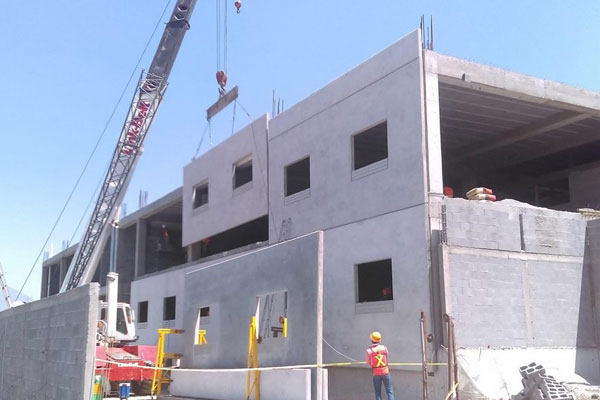Prestressed Concrete Structures
Prestressed concrete is substantially “prestressed” (compressed) during production, in a manner that strengthens it against tensile forces which will exist when in service. It is also known as pre tensile concrete, and is made by applying tension to the steel rebar during the curing process. Prestressed concrete is achieved by casting concrete into pre-assembled forms in combination with rebar and steel cable (strand) reinforcement. These cables are tensioned (stretched) to approximately three-quarters of their ultimate strength. Once the concrete cures to its required strength, the tensioning is released. The steel cables reacting to the release, transfers the tensile stresses into the concrete, rendering an even stronger structural component.
The main purpose of having prestressed concrete is to increase the load that the member can withstand. This is most common in long span beams found on bridges and railway viaducts, slab, and concrete piles. Prestressed concrete may be precast or cast in place, in this article we have focused on precast.
To prestress a concrete member, a high-strength steel strand is laid in the form before concrete is placed. The strand is anchored and then pulled until it reaches a desired tension. The amount of tension applied can range from a few thousand to tens of thousands of psi depending on design.
After tension has been applied to the strand, concrete is poured into the form. As it cures, the concrete bonds to the strand. When it hardens to its specified strength, the strand is released and axial compression is transmitted to the cross-section of the member. The piece can then be stripped from the form and moved to storage.
Pretension prestressing can impart camber to the member that is useful in resisting service loads. This is frequently the case in double tees, which form the driving surfaces in parking structures. The cambered tee deflects slightly as cars drive over it, then returns to its original shape. The prestressed concrete doesn’t crack because the prestressing holds it in compression.
In some precast concrete members, such as walls and sandwich wall panels, no camber is desired. In these cases the strand is placed in the centroid of the wall, or of the wythes, to prevent the introduction of camber. In composite panels, stresses are adjusted so that the prestressing force coincides with the centroid of the composite section. Generally, precasters space strands uniformly across wall panels.


/AVIVAET GATE VIEW.jpg)
/MANAGERS QUARTERS AVIVET.jpg)













